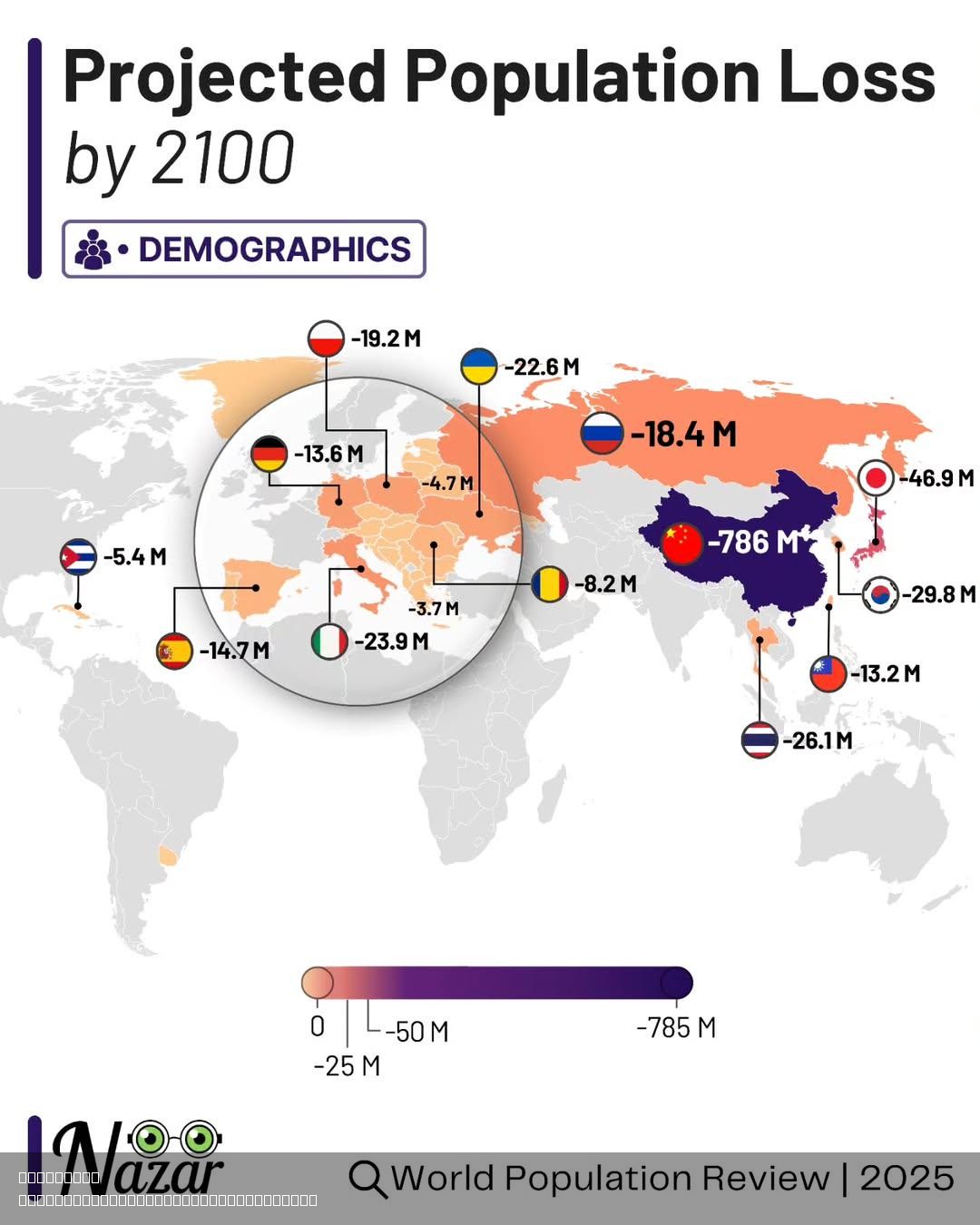Projected Population Loss by 2100 Map


Marcus Rodriguez
Historical Geography Expert
Marcus Rodriguez specializes in historical cartography and geographic data analysis. With a background in both history and geography, he brings unique...
Geographic Analysis
What This Map Shows
The "Projected Population Loss by 2100" map provides a visual representation of anticipated demographic changes across the globe. Through color-coded areas, the map highlights regions expected to experience significant declines in population by the year 2100. This demographic shift raises important questions about the future of urbanization, economic development, and social structures in various parts of the world.
As we delve into the topic of population changes, it’s crucial to understand that this isn’t merely a statistic; it reflects ongoing trends influenced by various factors, including birth rates, migration patterns, and socio-economic conditions.
Deep Dive into Population Dynamics
Population dynamics is a complex field that examines how populations change over time. Central to this topic are birth rates, death rates, and migration. Interestingly, many developed nations are experiencing declining birth rates, which leads to an aging population. For instance, countries like Japan and Italy are facing significant challenges due to their shrinking workforce and increasing elderly population. By 2100, Japan's population is projected to decrease from about 125 million to approximately 88 million, as per UN estimates.
Conversely, many developing countries continue to see rapid population growth. For example, nations in sub-Saharan Africa are expected to see their populations double or even triple by 2100, driven by higher birth rates and improving healthcare. This juxtaposition creates a fascinating demographic landscape, where some regions are grappling with the challenges of a declining population while others are struggling to provide adequate resources for a rapidly growing populace.
What’s fascinating is that migration plays a crucial role in these dynamics. Many people move from rural areas to urban centers in search of better opportunities, contributing to urbanization. However, the projected population loss in certain regions, particularly in Eastern Europe and parts of Russia, indicates a significant outflow of residents seeking better economic prospects elsewhere. Countries like Ukraine are projected to see substantial declines, which could lead to emptying cities and economic stagnation.
Additionally, environmental factors such as climate change can exacerbate these trends. Areas prone to natural disasters may see an even steeper decline as residents are forced to relocate. For instance, coastal regions experiencing rising sea levels may lose their population as people move inland for safety, further complicating the global demographic landscape.
Regional Analysis
When we break down the map by regions, we see distinct patterns emerge. In Europe, countries like Bulgaria and Latvia are expected to face significant population losses, driven largely by emigration and low birth rates. In contrast, nations in Africa, such as Niger and Uganda, are projected to see substantial gains.
In Asia, the situation is mixed. While countries like South Korea and Japan are forecasted to face population declines, India is expected to remain one of the most populous countries, with ongoing urbanization fueling its growth. Interestingly, the projected population losses in wealthier nations could lead to labor shortages, compelling these countries to rethink immigration policies and workforce strategies.
North America presents a unique case where population dynamics are influenced by immigration patterns. The United States is anticipated to grow, albeit at a slower pace, while Canada is actively welcoming immigrants to bolster its workforce. This highlights a stark contrast with regions facing population loss, raising questions about resource allocation and societal cohesion.
Significance and Impact
Understanding projected population loss is vital for several reasons. It affects economic planning, resource distribution, and social services. For example, regions with declining populations may struggle to maintain infrastructure and services, leading to abandoned towns and diminished economic activity. Conversely, areas experiencing population growth may face challenges related to housing, healthcare, and education.
Moreover, these demographic shifts can have profound implications for global politics and economics. Countries with aging populations may become more reliant on immigration to sustain their economies, while regions with youthful populations could emerge as economic powerhouses. As we approach 2100, it will be crucial for policymakers to navigate these changes effectively to ensure sustainable development and social stability.
In conclusion, the "Projected Population Loss by 2100" map serves as a vital tool for understanding the demographic challenges and opportunities that lie ahead. As we analyze these trends, it’s important to remain adaptable and forward-thinking to address the complexities of an ever-changing world.
Visualization Details
- Published
- August 7, 2025
- Views
- 104
Comments
Loading comments...